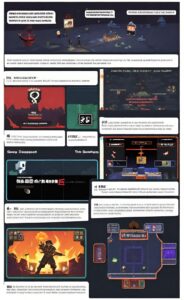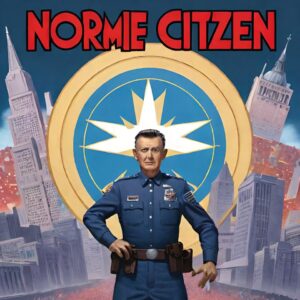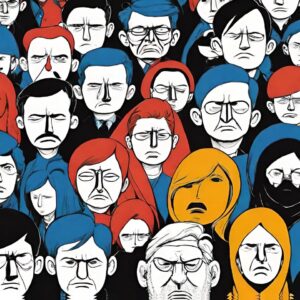The video game industry, once a haven for the creative minds and innovative concepts, now finds itself caught in the web of corporate influence and subtle propaganda. Where does this leave the realm of creativity, the once driving force behind this immersive art form?
The Corporate Influence and its Impact on Creativity
As the video game industry began to burgeon, corporations were swift to infiltrate this realm, manipulating its direction to serve their strategic aims. With their entry, a significant shift occurred wherein the primary focus tilted towards profits, superseding creativity. In this business-centric environment, novel and potentially disruptive game concepts are frequently overlooked in favor of safer, proven models that assure a good financial return.
This financial prioritization has, unfortunately, led to a sort of standardization of video game content, with corporations outlining what they deem to be ‘winning’ structures and styles. This overbearing corporate influence has resulted in an observable dilution of diversity in video games, as unconventional, creative ideas often find themselves shelved to make way for more formulaic, guaranteed-success approaches.
The Subtle Art of Propaganda in Video Games
In a world consumed by digital narratives, video games stand as a potent platform for the subtle diffusion of propaganda. Unlike blatant political agendas or clear ideological endorsements, this form of manipulation is discreet, operating under the guise of immersive storytelling and gameplay. As players navigate these virtual worlds, interact with its characters, and make a myriad of choices, they are subtly exposed to specific beliefs, biases, and worldviews.
The real power of propaganda in video games lies in its subtlety. A storyline can be carefully constructed to normalize certain ideologies, or a character can be designed to reinforce stereotypes. Even the choices offered to players within the game can often be a means of propagating specific perspectives. While the player may feel they are freely exploring an immersive narrative, they may not realize they are also subtly being influenced by it.
It’s not about black and white messages, rather it’s the gradual conditioning of the player’s thoughts and behaviors through the medium of the game. This allows corporations to promote certain ideals and agendas under the cover of entertainment. Be it a narrative subtly promoting consumerism, a character echoing violent tendencies, or gameplay options that favor certain moral choices, the traces of propaganda can be found embedded throughout the gaming experience.
The art of propaganda in video games is about strategically exploiting the game’s immersive and interactive nature to subtly influence a player’s perceptions and attitudes. And given the pervasive reach and popularity of video games, this covert mechanism of influence demands a more vigilant and critical approach from players, industry watchdogs, and society as a whole.
The Rise of Corporate Propaganda in Video Games
Corporations have been successful in transforming video games into conduits for their propaganda through meticulous control. Dominating the financial facet, they possess the power to dictate game development’s trajectory. This ability to navigate the creative process enables them to maneuver game narratives to align with their corporate agendas and push ideologies that complement their economic motives.
One might observe this through themes that subtly foster consumerism. Consequently, video games have evolved to focus more on delivering a carefully crafted message rather than offering a truly unique and entertaining experience for the players. It’s a calculated process. By subtly weaving their preferred narratives and themes into the gaming experience, corporations ensure their messages are seamlessly integrated into the storyline and gameplay.
It’s not about blatant messaging but rather about subtle conditioning over time, which players may be oblivious to. This undercover propagation has changed the landscape of the gaming industry, shifting it from a platform of creativity and innovation to a vessel for strategic corporate communication.
But how are these corporations able to subtly weave their agendas into the gaming narratives? The answer lies in their control over the resources, game development directions, and to an extent, the creative liberties of the game developers themselves. With a firm grip on these aspects, corporations can subtly, yet effectively, engineer the gaming experience to serve their interests. It’s a silent transformation that, if left unchecked, could change the very essence of this immersive medium.
Propaganda as a Tool for Influencing Player Behavior
Beyond shaping narratives and pushing ideologies, propaganda in video games is also a powerful mechanism for nudging player behavior. This subtle influence can be seen in how game mechanics are designed and implemented by corporations. For example, the incorporation of loot boxes and microtransactions is a strategy aimed at fostering a culture of spending within the game environment. These features, while often advertised as optional, are intentionally woven into the core gameplay, pushing players towards a continual investment of real-world money for in-game rewards and advancements.
These strategies reflect a calculated approach by corporations to subtly condition players’ actions, decisions, and attitudes within the game environment. It’s not just about players engaging with a narrative, but how their behavior is gently guided towards specific outcomes that align with corporate agendas. This manipulation can be so subtle that players might not even recognize the influence exerted upon their gaming behavior. Thus, the tool of propaganda extends beyond the game narratives, becoming an integral part of the gameplay mechanics themselves, influencing not only the way players engage with the game but also the choices they make within it.



Dangerous Link Between Propaganda and Player Psychology
Video games, with their engaging and interactive design, have a unique psychological impact on players. Participants are not mere observers but active drivers of the narrative, experiencing the world of the game firsthand. This immersive participation can amplify the effect of propaganda embedded within the game. The ideologies, attitudes, and behaviors subtly endorsed by the game can be internalized by players, influencing their perceptions beyond the virtual realm.
This is particularly concerning when we consider that many games are played by impressionable young audiences, whose views of the world are still forming. They may unknowingly absorb the biased perspectives and actions presented in the game, carrying these influences into their real-world interactions and decision-making processes. This underscores the significant potential for propaganda in video games to shape societal attitudes and norms.
The psychological imprint left by these games can be far-reaching, subtly yet profoundly altering players’ worldviews over time. As such, it is imperative to recognize and critically evaluate the subtle influence of propaganda within video games, especially considering the potentially powerful psychological impact on the player’s mind.
Impact of Propaganda on Politically Correct Gaming Culture
The encroachment of corporate control and subtle propaganda has undeniably influenced the cultural dynamics of video gaming. A discernible trend toward politically correct content has been observed, with companies steering their narratives towards safer, commercially appealing territories.
This approach has an underbelly, often serving as a means for these corporations to shape narratives and subtly reinforce their ideologies. Games that dare to challenge mainstream beliefs or probe sensitive issues are frequently sidelined or suppressed, creating a climate of conformity and stifling innovation.
This preoccupation with politically correct gaming can, therefore, result in a homogenized gaming landscape, where diverse perspectives and unconventional narratives are marginalized. Recognizing the influence of this insidious form of propaganda is crucial to maintaining the diversity and creative freedom that lie at the heart of the gaming medium.




